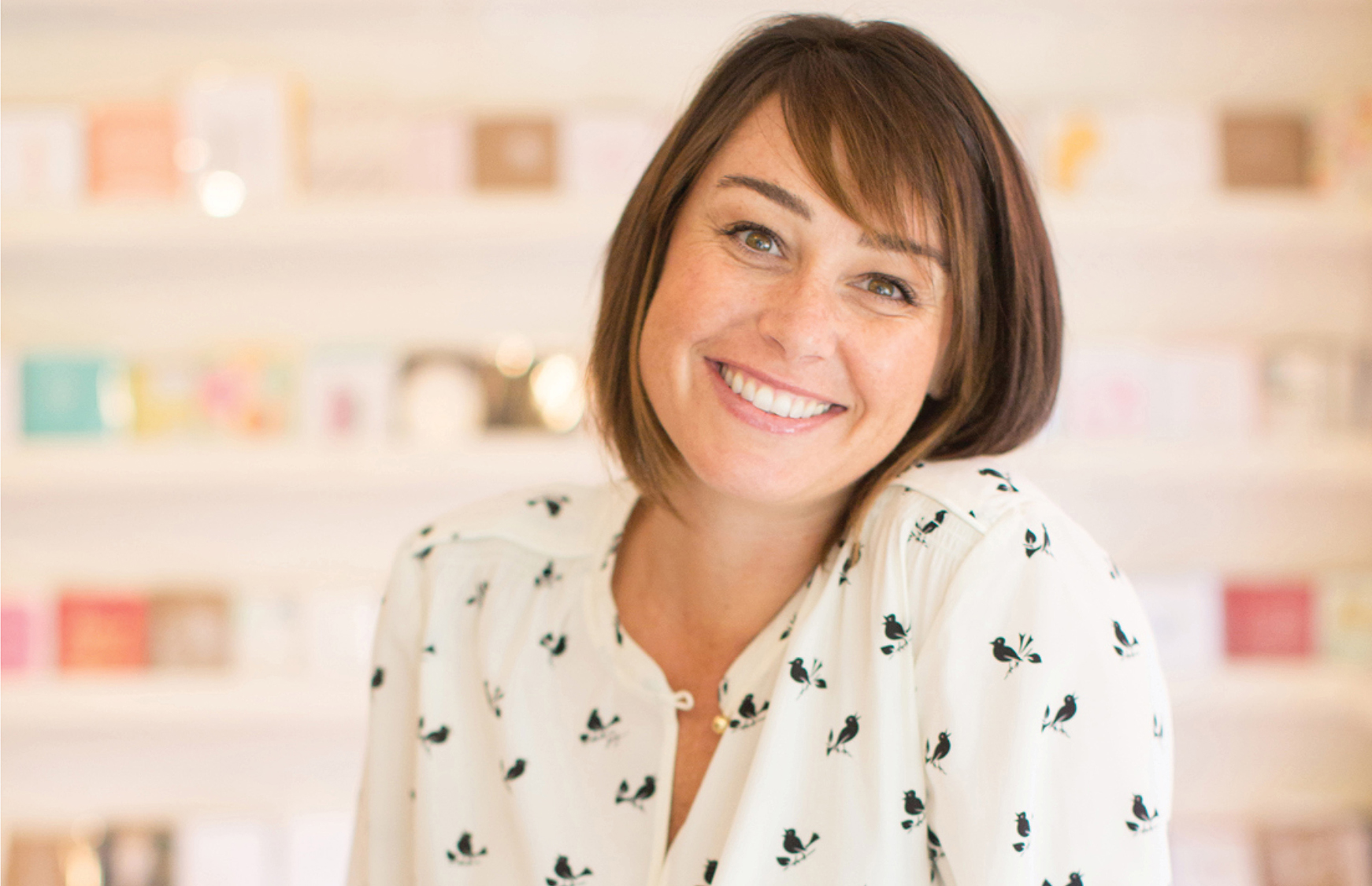What is it about pretty paper goods that puts a smile on our faces? We think it’s the simplicity of original design, the novelty of a hand written note and the beauty of distinctive, thoughtful style. As we consider the resurgence of paper goods, we can’t possibly leave out an introduction to LA-based letterpress company, Sugar Paper. We promise that, after virtually scrolling through their interview, you’ll be left with an intense curiosity for this traditional printing method—one that we think is coming back with fierceness.
Co-founded by Chelsea Shukov in 2003, Sugar Paper has won over many with its unparalleled style. The nostalgia of letterpress printing inspired Chelsea and co-founder, Jamie Grobecker, to explore the art deeply, turning what once was a hobby into a wildly successful business and brand, which just recently debuted a collection for Target! Rather than shy away from the company’s high-end reputation, Chelsea embraces their status and focuses on maintaining Sugar Paper’s distinctive style and superior quality. As the company celebrates its ten-year anniversary, Career Contessa is proud to highlight Chelsea for her fearlessness as an entrepreneur and her bold approach to being a businesswoman.
Her Starting Point
What was your first job out of college and how did you land that position?
I landed my first job out of college through LA connections with Brillstein Grey Entertainment, an entertainment management company that also does production. I was the second assistant to Brad Grey, who now runs Paramount. At the time, Brillstein Grey was producing some great HBO shows, including The Sopranos.
When you went to school, did you know what direction you wanted to take your career in?
No. I was majoring in women's studies so that I could pursue public speaking to young girls struggling with body image and self-esteem issues. I knew that career wasn't going to be a slam-dunk right after college, which is why I pursued the job at Brillstein Grey. I was speaking at elementary and junior high schools on the side, but about six months into that I realized that I didn't actually enjoy it. I had anxiety about speaking and I didn't want to make a career out of it, on top of which I realized I hated my job as a second assistant.
Where did you learn your design skills? What design programs do you use most often?
When I left my second assistant job my boss was gracious and he offered me a job at a start-up company that he was launching. Someone had told me once, if you look up and you don't want anyone's job above you, you're in the wrong place, and in that company the only person's job that appealed to me was the art director's job. Her name is Ophelia Chong and she taught me the Adobe series: Photoshop, Illustrator and InDesign. I really wanted to go into letterpress printing and my parting gift from her was a letterpress tool, one that we still use today—a book of over one thousand fonts, plus a disc.
What was the transition like between your apprenticeship with Ophelia Chong and your current field?
I didn’t have office hours with Ophelia so I worked with her in the morning and then the rest of my time was spent on side projects. There's something really interesting about stationery that seems counterintuitive: stationery is viral. When you do a hundred wedding invitations for somebody that go to a hundred houses, people take notice of the product. From there, I started generating business on the side and it eventually became my income.
What attracted you to letterpress printing?
Snow & Graham is one of the original companies that started using letterpress and made it very popular 10 or 15 years ago. I had a Snow & Graham card and my business partner, Jamie, and I would run our fingers over it and say, “How are they doing this?” I did a Google search for letterpress and found a tabletop, which is considered a hobby letterpress, for sale.
Nobody taught me, I taught myself. I did it all wrong and we used way too much ink. I look back on those first jobs and notice how sloppy the ink is in places, but I just kept at it. I eventually moved to a big letterpress machine that I shared with a designer friend. I would sell letterpress during the day and print at night.
How did you go about pricing your products?
We priced it all wrong, even after we started the store. That was something that Jamie and I really learned the hard way. When we opened the store we were selling custom-made letterpress cards for $2 a card. So for 50 pieces of stationery we were charging $100, plus a $25 set up fee. We weren't even breaking even on that product.
It took us a really long time to correct the cost because, at the time, Jamie and I were working at the store, designing everything and printing everything. We had enough money to pay all the bills, but we weren't paying ourselves, and it took us a really long time to sit down and actually create a spreadsheet that captured the costs. When people ask why it's so expensive, there's not an apologetic bone in my body because now I just know how much it costs to make these things.
What advice would you give to aspiring paper designers?
Find your own look. What I see too often in this industry is people borrowing a lot of different looks from a lot of different companies, and then their company is just a smattering of everybody else's work. I think the companies that are successful are the ones with a strong identity.
Her Big Break
You co-founded Sugar Paper with Jamie in 2003. How did your choice to work with a partner change your business?
Bringing on a partner wasn’t a conscious choice but ended up being the best choice I made. I started Sugar Paper out of my apartment and Jamie was a friend from college that would help me with my workload. When we opened the store, Jamie was the only person who knew how to do what I was doing. So from the inception of the actual storefront it was ours.
I'm a really big fan of having a business partner if it works. I don't feel like you will ever know until it's too late if it's going to work. The beginning is kind of like a romance. It seems fun and great, and I've seen a lot of people I know go into business with friends and it gets really icky. I think we just got really lucky.
What was the process of opening the storefront like?
Jamie and I visited a popular LA bakery, Clementine, all the time and I could tell that our client demographic was there. When a space next to Clementine opened, I met Jamie that same day to convince her that we should open a store. She thought I was crazy, but within two weeks we had signed a lease. It was definitely a leap situation.
I look back now and it was reckless. We each borrowed money from our parents, and my dad required me to give him a paper tour of Los Angeles. I took him to Aardvark Letterpress and other big letterpress companies in LA. Some of these companies were charging $23 a card! That pretty much convinced my dad that there was a business for letterpress.
How did you handle finances?
The business stuff was really the hardest learning curve for us; it wasn't our talent, it wasn't our skill. In fact we still have learning curves in that category. We do have a property attorney and trademarks. All of the things we should have done in the beginning, we have now, but it took us some time.
All of your products are made by hand in your LA office. What impact does designing and printing in-house have on your product and company? Do you find it challenging to keep up with your high reputation?
Making products by hand and in our headquarters is important to us and has a lot to do with control. We get really frustrated when we have to send out for something because we can't control the quality and the timing. By making all of the products ourselves, we control our press schedule and the quality. We love it but it makes things more labor-intensive. We do old-school manufacturing.
I don't find it challenging to keep up with our high-end reputation only because our company culture is rooted in that. Everybody who works here was taught that from the moment they started.
One of the challenges of a creative career is staying inspired. Where do you find inspiration?
Jamie and I are inspired a lot by one another. We like a lot of the same things and that’s why the Sugar Paper aesthetic is so clear. When we're completely dry, we go to Anthropologie. It's such a funny thing, but we'll wander through there because it is such a flea market experience. You're not getting one angle; you're seeing a lot of different colors, a lot of different patterns. Pinterest and Kate Spade are also big inspirations for us. I feel like you have to know what your thing is and be really confident in that.
At what point did you decide to expand your team, and what do you look for in future employees?
We expand our team when we have to. It's really when we absolutely physically cannot do it with the team that we have. We prefer to train somebody because we taught ourselves and we have our own style of printing. If somebody comes from letterpress they actually can't print the way we print because they're coming to the table with their own method. We're big fans of starting from scratch with our pressmen. Our designers have been with us for a long time and our hiring process has a lot to do with someone's attitude. We have about 12 full-time and 10 part-time employees.
Can you take us through the design process? How long does it take to create a design and print the product?
If a client has a specific deadline, it could take 3 weeks, like when we partnered with Goop, Gwyneth Paltrow's lifestyle website. From the time we sit down and brainstorm the design, plate the job, get it on the press schedule, have it printed and packaged, the shortest cycle is 2 to 3 weeks. When we do all of our development for our launch every year at the stationery show in May, we start in January. It takes a really long time and we schedule it on the calendar based on seasons.
How have you expanded your product line over the years?
When we opened the store we only purchased products from other designers. We didn't have any of our own products. We did custom orders ourselves and we also sold custom through other companies, but we couldn't find specific products that our customers wanted. We were so embarrassed that we always had to say no, so we started making our own designs.
One of the main differences for us is that private designers design and then they take their designs to market. We get to design and then put them in our retail stores and see if they work. I think it's a pretty interesting thing because something that we all love might bomb with the retail consumer. We make what we know people want to buy and I'm totally comfortable with that. We don't put out anything that we don't like, but some of our ideas that we thought were going to be big sellers just don’t move.
If we had the chance to peek at your schedule, what would an average day look like?
My answer when we started versus my answer now is totally different. Now, I'm never the first person here. One of the biggest luxuries about owning my own business is that I am not racing to work to get to a desk at a certain time. I'm here usually around ten, sit down, check my email, check my voicemail, etc. Jamie and I share an office so we sit and talk for a lot of the morning, whether it is a response to an email or something about one of our kids. It's social and business. Every Monday we have a staff meeting where we base the conversation around the staff agendas, not ours. Depending on what happens at the meeting or something that Jamie and I need to address, we execute on lists. We have lists all over the place. I handle public relations, social media, web and human resources, so I interface with the staff a lot more. Jamie handles finance, accounting and human resources from a policy standpoint. We co-design everything, so a lot of our day also is spent art directing.
Her Perspective
What is the most important thing you have learned since starting and running your own successful business?
That it's not easy. It's really demanding. The myth is that I get to make my own schedule, but that's not true at all. It owns me.
What has been the best moment of your career so far?
It's such a silly thing but when we opened the store not only did we have no money, but we painted the walls, bought the product, installed the point of sale, designed everything, printed everything, handled customer support—everything. Every year we close our Century City store for one week between Christmas and New Year’s, and I remember locking the door on the 24th of December and standing and looking at the store and just bawling. I felt like so many people told me that I couldn't do it, and I was drowning in it at that point, but I felt that moment of, “Ha! I can do this.” That was my moment. I had a coach tell me that the best feeling is exhaustion after victory and I do feel like some of the best moments are at midnight on December 20th when my whole team is here laughing, drinking wine and tying bows.
Sugar Paper is now a thriving business with physical locations, Internet business, countless print and digital press mentions and a loyal customer following. What’s next for your business?
We're really digging deep into expanding our product line. We celebrated ten years of business in August and that was a big moment for us.
The future of our company is being businesspeople: streamlining expenses and processes, and making sure that if we're going to spend a lot of energy doing something, it's really worth it. I think that has a lot to do with being a parent. I used to be here from 9 o’clock in the morning until 10, 11, 12 o’clock at night. I don't have the luxury of doing that anymore. When we're here, it has to be worth it.
You May Also Like
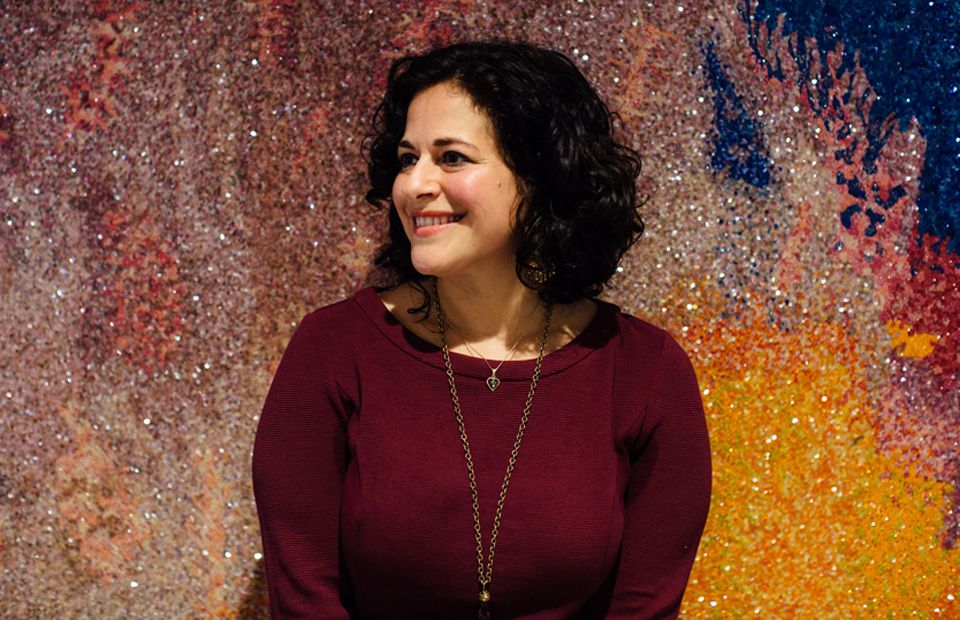
Consumer Goods
Our New Dream Job? Vice President of Social Consciousness & Innovation
"The truth is, having a more responsible supply chain or more responsible business is made up of lots of small actions. And one thing that I really love about my work is that nothing is black and white. It's all gray space."
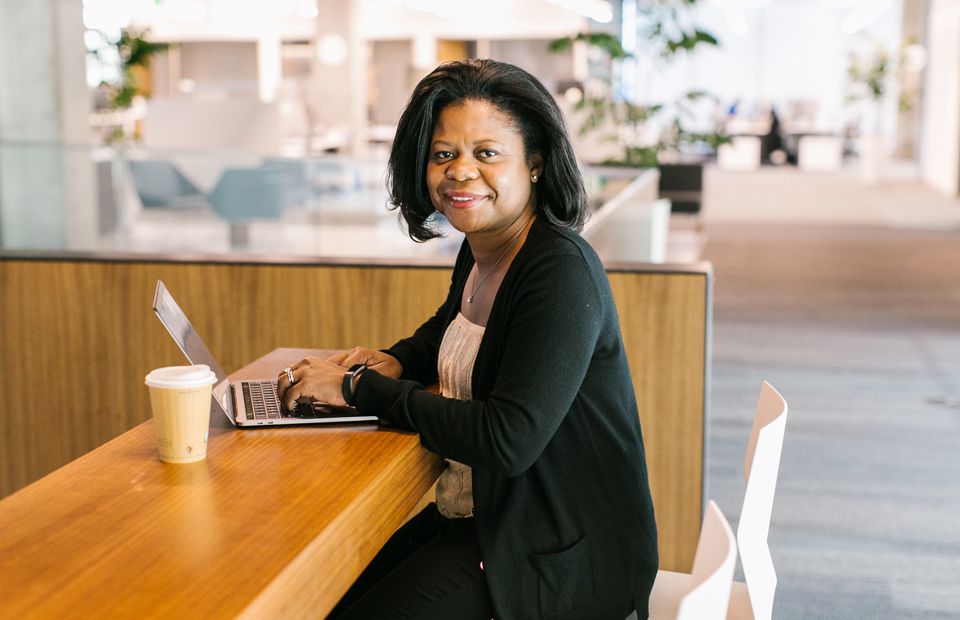
Consumer Services
An Executive at Intuit on How to 'Send the Elevator Back Down'
"What I often tell engineers—especially women engineers—is that it’s good to be excellent, but you’ve got to make sure it’s not a well-guarded secret."
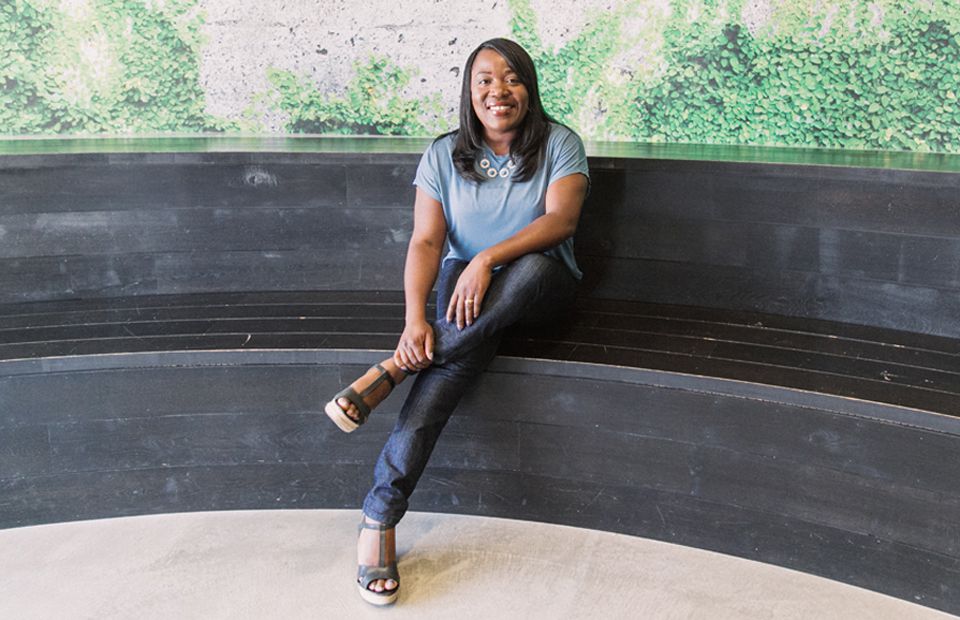
Consumer Services, Technology
A Top Lawyer Talks Leadership, Transparency, and a Music Empire's Goals for Diversity
As Chief Counsel at Pandora, Adelmise Warner has a few thoughts on leaning in.
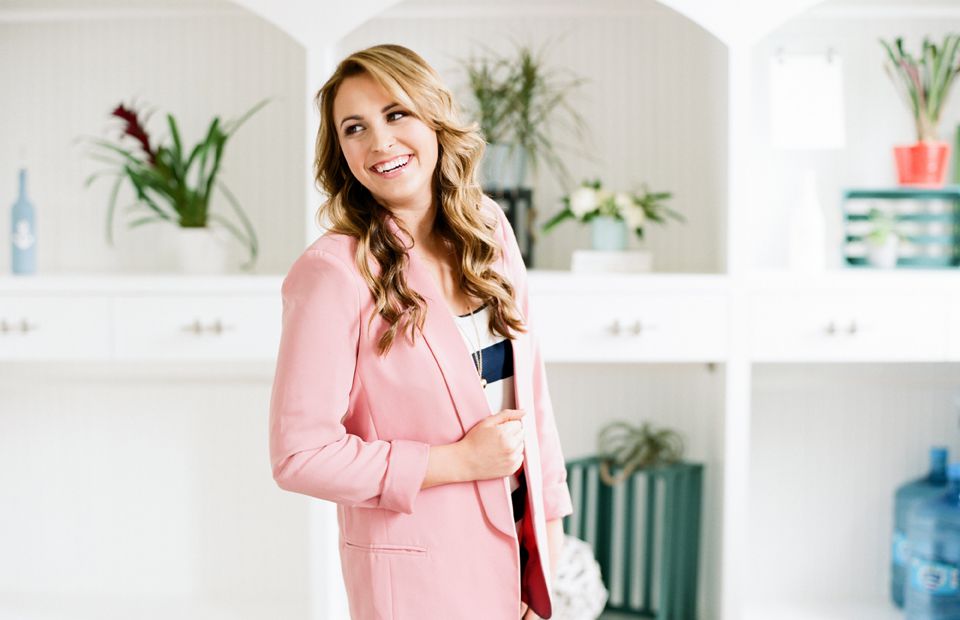
Consumer Goods
Rising Tide Society's Founder on Why Not Everyone's Cut Out for Entrepreneurship
Natalie Franke on creative entrepreneurship and her journey with Rising Tide Society
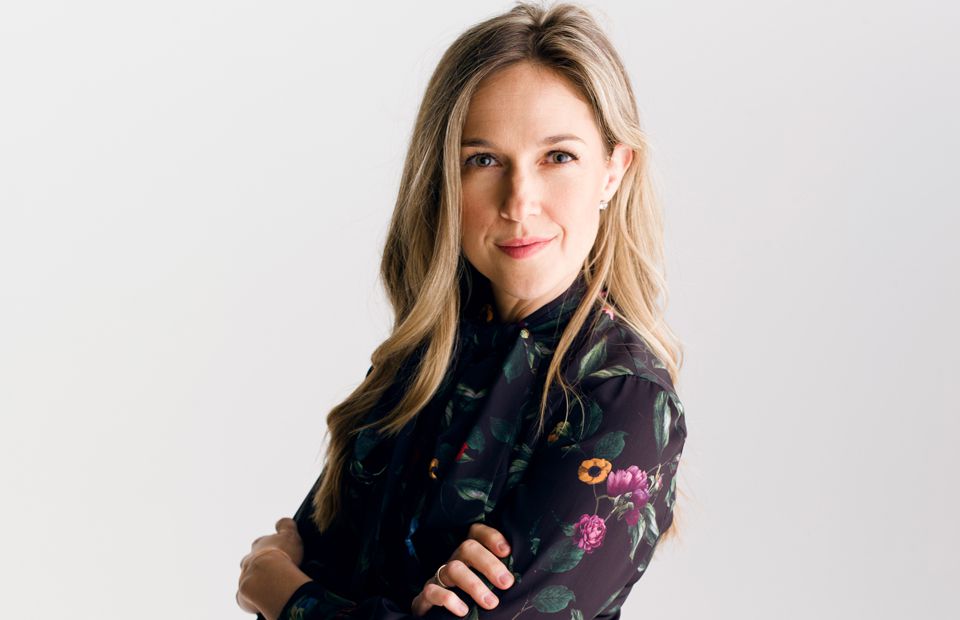
Consumer Services, Technology
Here's How a Female V.P. at a Tech Startup Faces the Gender Gap
Nikki Pechet on writing your own maternity leave policy and taking a job for joy, not money.
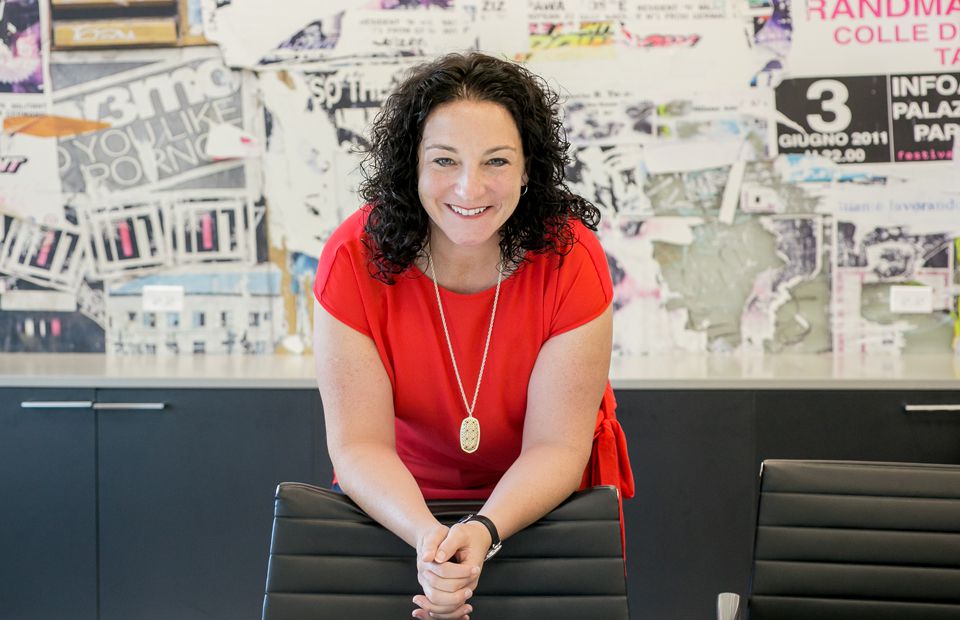
Consumer Goods, Technology
A Sales V.P. on What It's Like to Work at Pandora
Casey Forbes is living an audiophile's dream career.
Get the Best Career Advice Delivered To Your Inbox
Join our newsletter to stay in the loop.
